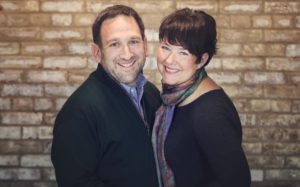When Dan’s mom died this past May the Rabbi at her St. Paul Shiva shared an interesting observation. He explained that Jews traditionally avoid euphemisms like “passing” or “moving” on. They speak directly of death and dying. Now the Rabbi wasn’t being critical of other faiths or traditions he was just noting that death is certain and unavoidable and that confronting this certitude directly and head on can actually be healing.
This was affirming to both of us because we had already started to do this. As we shared in a previous post, Cassie was a little obsessed with planning the details of her death, burial and funeral and we have been doing that in fits and starts for almost 14 months. There is also a lot of dark death humor in the Cramer household these days. And while this often takes our friends aback, it helps us to talk and joke about it. This is our life now and while hopefully still many years off —the previously abstract and far-removed idea of death has been replaced by a new and more immediate reality. Death now seems closer than we would ever want or have imagined and we just have to deal with that fact.
So with all of this on our minds, Cassie signed us up for a Community Education Class called “Death: It’s a Collaborative Event.” We walked into Central High with some trepidation but also open to what we might learn. And we learned a lot. First though, we were a little surprised to find that the class wasn’t filled with people like us who were confronting what could be the imminent death of a loved one. Instead it was attended by people who were seeking to better understand death and how to navigate this one great certainty that we all confront.
The class leaders, a “death doula” and a celebrant (who helps create traditions and lead ceremonies) explained that we can “have the death we want” but only if we talk about it and plan for it. They led us through a visualization asking us to picture our final days. The room we are in. The way it looks and smells. The art on the walls. The photos by the bedside. The music playing. What surrounds us? Who surrounds us? Is someone with us all the time or do we want to be left alone at some moments? Have we written goodbye letters? Recorded video? Have we put ourselves in a position where we can let go? Are we set up to die on our terms or are we leaving all that to chance?
We sat there with our eyes closed imagining all of this. We reached for each other’s hand. We cried. But we also appreciated the questions and the conversation that followed. The biggest piece of advice — create a death “plan,” write it down and share it with our loved ones. Now on the one hand that seems hard and scary but on the other really liberating. So that’s what we are doing — together, one plan for each of us, and we have given ourselves a deadline so we can be done with the fits and starts and focus our energy on living. Then as a final affirmation, we learned that even Mr. Rogers talks about death. We recently saw the new movie “A Beautiful Day in the Neighborhood” and both walked away with a Fred Rogers’ quote about dying stuck in our heads: “Anything that is human is mentionable. And anything that is mentionable can be manageable.” Even, or especially, contemplating death. Thanks Mr. Rogers, Death Doula Jane and Rabbi Latz for the inspiration.

The Roger’s movie was terrific. What a beautiful view you have for your task. XO